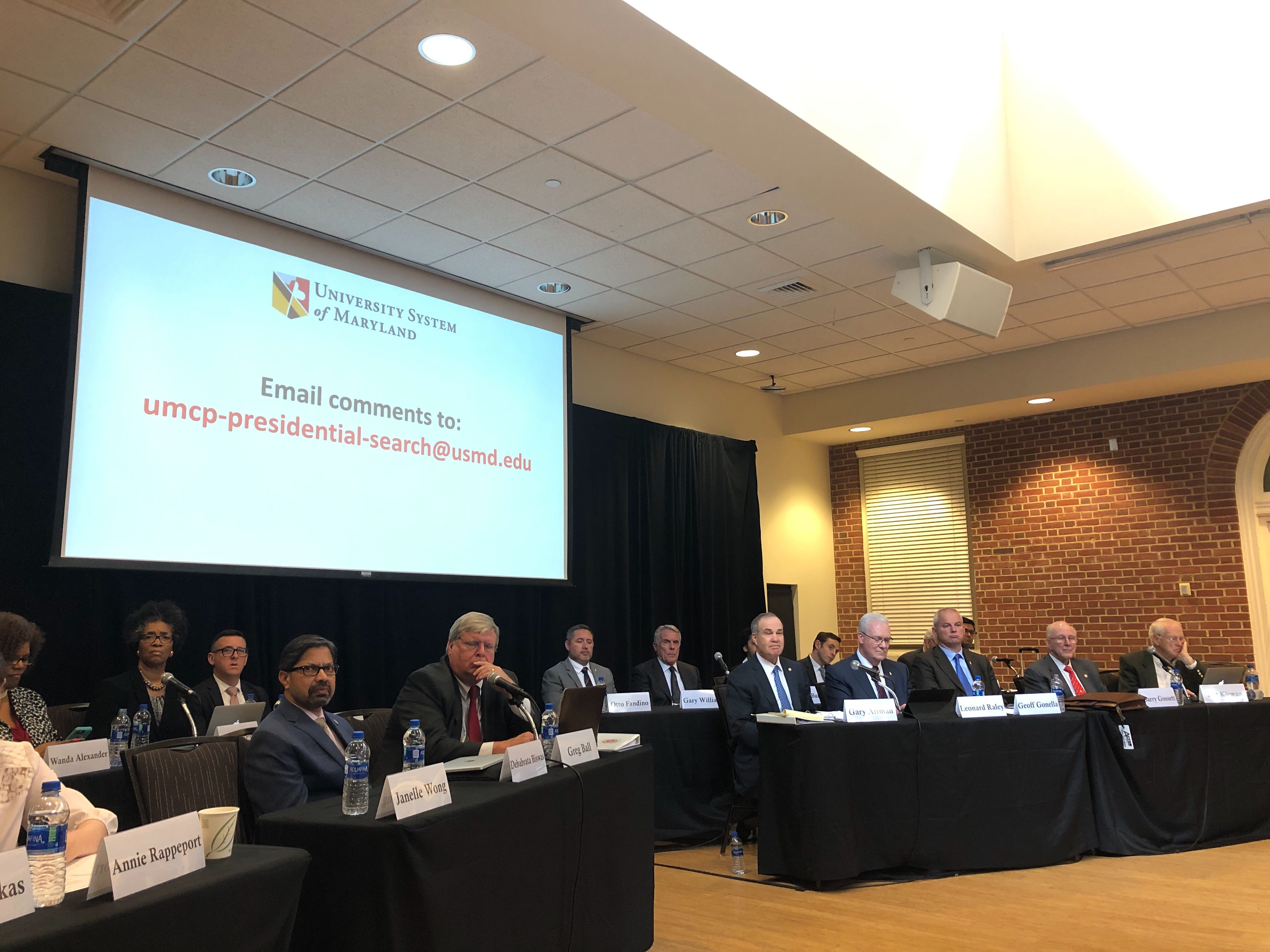Views expressed in opinion columns are the author’s own.
In its search for a new vice president of student affairs, the University of Maryland has shown an exceptional amount of transparency in the appointment process. With an open forum for each candidate and online response forms for students to submit their opinions, the university seems to actually be listening to the university community in its considerations.
Yet it’s hard not to compare the processes surrounding this position to the lackluster execution of “student involvement” in the search for this university’s next president. The steps of the search process for the student affairs vice president position should be replicated to find university President Wallace Loh’s replacement — even if it means reimagining the Board of Regents’ search timeline and confidentiality priorities.
This past week, there were two forums for the presidential search that were open to the community, and many in attendance deemed them disappointing. Despite being specifically designated for the community, both were scheduled in the middle of the school day, and not every member of the search committee was even present. Some students found the tone of the events dismissive, which won’t help the regents win back student favor following the controversy over DJ Durkin’s firing and the ongoing accreditation review. This lapse in the board’s consideration of students needs to be addressed.
The Student Government Association holds a similar view, reflected by its proposed “emergency” legislation following the forums this week, which urges more student involvement in the presidential search and appointment proceedings. As important as the proposal for more interaction with the board and search committee is, the SGA needs to follow through and make sure that students and faculty outside its organization are heard. Every member of the community deserves to be involved.
At the moment, however, both the search committee and the board are dedicated to complete confidentiality as the search moves forward, stating that “many prospective candidates expect confidentiality in searches at the presidential level so as not to endanger their current positions.” This conundrum prevents some steps for community involvement, such as forums for each candidate, since a completely open search has the potential to dissuade good candidates who are already employed from being considered.
But, in the minds of many, the board has lost its right to complete secrecy. It must find ways to include more students and faculty in every step of the process.
There are several ways this could be achieved, even if the board and the search committee must alter their timeline surrounding the process. While open forums with each finalist — who are set to be selected by early 2020 — are not possible for a closed search, the board could release statements by each finalist for the community’s consideration and provide opportunities for feedback. The board and the search committee should also be transparent about how influential community feedback is, which may alleviate some students’ impression that their input was being ignored at the previous forums.
The board’s actions over the past year necessitate more community checks such as these — especially in finding Loh’s replacement, an appointment that will have a huge impact on this university for years to come. The board and the search committee’s job is to find a candidate who will best serve the community’s needs, so they need to make the community’s input a priority. The search for a student affairs vice president has provided a model for transparency — and it shouldn’t be forgotten as the search committee looks for a new president.
Ray Newby is a sophomore English major. He can be reached at raynewby00@gmail.com.



